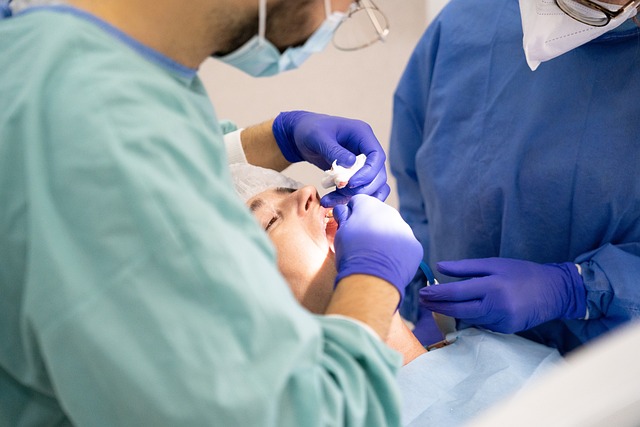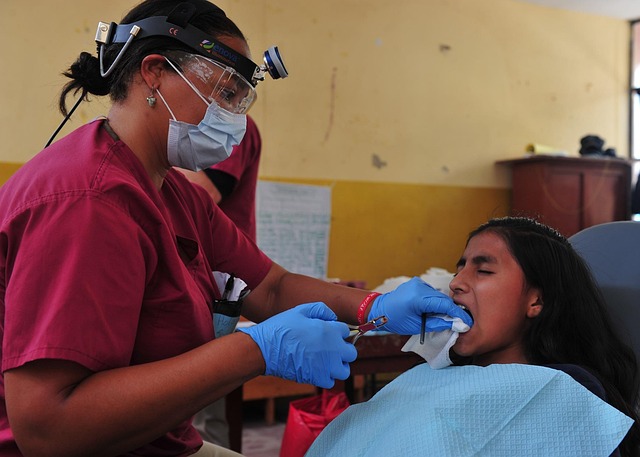Dental malpractice coverage is a vital component of risk management for dentists, protecting against liabilities arising from negligence or errors in treatment. Common risks include misdiagnosis, improper procedures, and informed consent issues. Specialized dentist liability coverage is crucial due to the intricate nature of dental work, offering tailored protection against malpractice suits and safeguarding assets. A robust policy includes general liability, professional liability, defense costs, and comprehensive dental malpractice insurance. Understanding claims processes, state regulations, and continuous learning help dentists navigate risks effectively. Adequate dentist liability coverage minimizes financial burdens, reduces legal costs, and enables dentists to focus on patient care.
In the dynamic field of dentistry, ensuring comprehensive malpractice coverage is paramount. Dental professionals face unique risks, from equipment malfunctions to misdiagnoses, potentially leading to significant legal repercussions. This article delves into the intricate world of dentist liability coverage, exploring common malpractice pitfalls and the essential role of specialized policies. We dissect key policy components, navigate claim adjustments, and offer risk mitigation strategies, drawing from real-world case studies for a holistic understanding of dental malpractice prevention.
- Understanding Dental Malpractice: Common Risks and Claims
- Why Specialized Dentist Liability Coverage is Essential
- Key Components of a Comprehensive Dental Malpractice Policy
- Navigating Claim Adjustments and Legal Proceedings
- Best Practices for Risk Mitigation and Prevention Strategies
- Case Studies: Real-World Examples and Lessons Learned
Understanding Dental Malpractice: Common Risks and Claims

Dental malpractice coverage is a critical component of risk management for dentists, as it protects them from potential liabilities arising from negligence or errors in dental treatment. Understanding common risks and claims is essential for any dentist looking to mitigate their exposure. One of the most frequent sources of dental malpractice claims involves misdiagnosis, where patients are not properly assessed, leading to incorrect treatments or delays in necessary care.
Another significant risk area is improper treatment techniques, such as causing damage to teeth, gums, or other oral structures during procedures. Additionally, failure to obtain informed consent from patients, either through inadequate explanations of proposed treatments or missing important details, can lead to claims of malpractice. Dentists must also be vigilant about infections, as cross-contamination and inadequate sterilization protocols pose substantial risks, especially in today’s health-conscious environment.
Why Specialized Dentist Liability Coverage is Essential

In the competitive landscape of dentistry, professionals must prioritize their protection against potential risks and malpractice claims. General liability insurance often falls short in addressing the unique challenges faced by dentists. Specialized dentist liability coverage is essential due to the intricate nature of dental procedures and the specific risks associated with them. From precise drilling and complex fillings to surgical interventions, every step involves delicate precision and potential consequences.
This tailored coverage accounts for the specific needs of dentists, ensuring they are adequately protected against malpractice suits arising from negligence or errors in treatment. It provides a safety net that allows dental practitioners to focus on patient care without the constant burden of legal exposure. By investing in this specialized insurance, dentists can maintain peace of mind, knowing their practice and personal assets are safeguarded against financial risks stemming from unforeseen incidents.
Key Components of a Comprehensive Dental Malpractice Policy

When crafting a comprehensive dental malpractice policy, several key components ensure adequate protection for dentists and their practices. First and foremost, the policy should encompass general liability coverage, indemnifying the dentist against claims of bodily injury or property damage to patients. This is essential as it shields the dentist from financial ruin if a patient sues over an adverse oral health outcome.
Additionally, professional liability or malpractice insurance specifically covers claims of negligence in dental treatment. This includes errors in diagnosis, improper procedures, and failure to obtain informed consent. The policy should also include coverage for defense costs associated with legal disputes, providing the dentist with financial support during potentially lengthy legal battles.
Navigating Claim Adjustments and Legal Proceedings

Navigating claim adjustments and legal proceedings is a critical aspect of managing risks for dentists, underscoring the importance of robust dentist liability coverage. When a patient files a claim, understanding the process is key to mitigating potential financial burdens. The first step involves assessing the validity of the claim, which requires thorough documentation and record-keeping by dental practices. Effective communication between the dentist’s office, insurance providers, and legal representatives ensures a smooth adjustment process.
Legal proceedings can be complex, with each state possessing unique regulations governing dental malpractice suits. Dentists must remain informed about these laws to defend against allegations accurately. Adequate liability coverage, tailored for dental professionals, provides financial protection during these processes, shielding practices from significant losses and ensuring they can continue offering quality care to patients.
Best Practices for Risk Mitigation and Prevention Strategies

To mitigate risks and prevent malpractice claims, dentists should implement best practices that encompass a comprehensive approach to patient care and safety. Regularly updating knowledge and skills through continuing education is essential, as it ensures dentists stay abreast of the latest techniques and guidelines. This includes staying informed about evidence-based procedures, new technologies, and changes in dental standards. Additionally, maintaining detailed records of patient histories, treatments, and consent forms is crucial for transparency and accountability.
Communication plays a vital role in risk prevention. Dentists should foster open dialogue with patients, ensuring they understand treatment plans, potential risks, and alternative options. Obtaining informed consent before any procedure not only protects the dentist but also demonstrates a commitment to patient autonomy and satisfaction. Furthermore, establishing clear protocols for emergency situations and regularly training staff on crisis management can significantly reduce liability risks associated with unexpected events.
Case Studies: Real-World Examples and Lessons Learned

In the realm of dentistry, where precision and patience are paramount, having the right insurance is not just beneficial; it’s essential for dentists to mitigate risks and protect their practices. Case studies from real-world scenarios offer invaluable lessons about dentist liability coverage. For instance, a study on a misdiagnosed condition revealed that adequate malpractice insurance could have eased the financial burden on the dentist, who ended up paying substantial legal fees and settlements.
These real-life examples underscore the importance of comprehensive dental liability coverage. By understanding common pitfalls—such as errors in diagnosis, treatment planning, or communication with patients—dentists can tailor their insurance policies accordingly. This proactive approach ensures that practice disruptions and financial losses from potential lawsuits are minimized, allowing dentists to focus on providing quality care to their patients.
